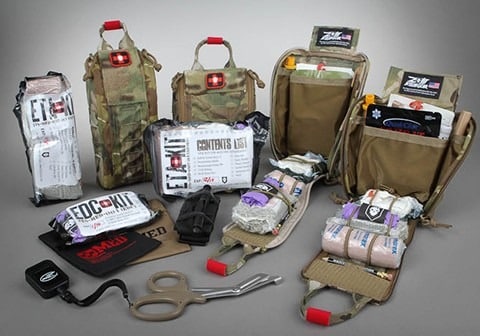While 2020 has been the year of staying at home, we know that natural disasters can happen at any time. The recent Lake Ōhau fire and Napier flood is a timely reminder of how important it is to be prepared. How many of us have an emergency kit if we need to make a fast, unexpected move? The unfortunate answer is: not enough.
The reality of natural disasters is that they can leave people with nothing but the clothes on their backs. If you have an emergency kit, you’ll be much better prepared to get through the first few days. If you look online, there are many ready-made kits available, but we recommend you review what each kit contains to make sure it suits your specific needs. Alternatively, you can make your own kit. They’re easy to put together. Here’s a guide to help you get prepared.
1. Make a plan
The most important thing you should do as part of any survival plan is to talk to your family about it. It doesn’t need to be a big conversation, simply make decisions about where you will meet and what you’ll need to make it through. Make sure everyone knows where your kit will be stored. Make it easily accessible and easy to retrieve, even in the dark.
For people living in coastal communities, contact Civil Defence to find out where you should go in the event of a tsunami as you’ll specifically need a safe place on higher ground.
2. What to have in your emergency kit
Once you’ve worked out everything you need to put in your kit, purchase a backpack that’s large enough to comfortably hold everything. Backpacks are ideal as they are easy to carry and can manage a good amount of weight. Depending on the size of your family and your needs, you may need several packs. Make sure items are distributed evenly between the packs to even out the load.
Here’s a list of recommended items:
• Three days of water, or ten litres per person. Depending on your water supply, you may need sterilising tablets to make sure it’s safe to drink.
• Three days of food per person. Pack long-lasting packaged food that can be eaten without needing to be cooked. Don’t forget the can opener.
• Toilet facilities, e.g. toilet paper, a plastic bucket and hand sanitiser.
• Masks and gloves.
• A torch, radio, spare batteries and an emergency phone charger.
• Cash.
• A change of clothes, raincoat and hat.
• A first aid kit, including any prescription medicine you take.
• Anything else you may need for small children and pets.
If you have a car and plan to take additional supplies, make sure they can be loaded fast, or consider keeping those essentials in your car if you have enough space to spare.
Check and update your kit regularly, at least once a year. Change water, replace expired food and make any adjustments if your needs have changed. We hope this is one move you’ll never need to do, but it pays to be prepared. Stay safe.
